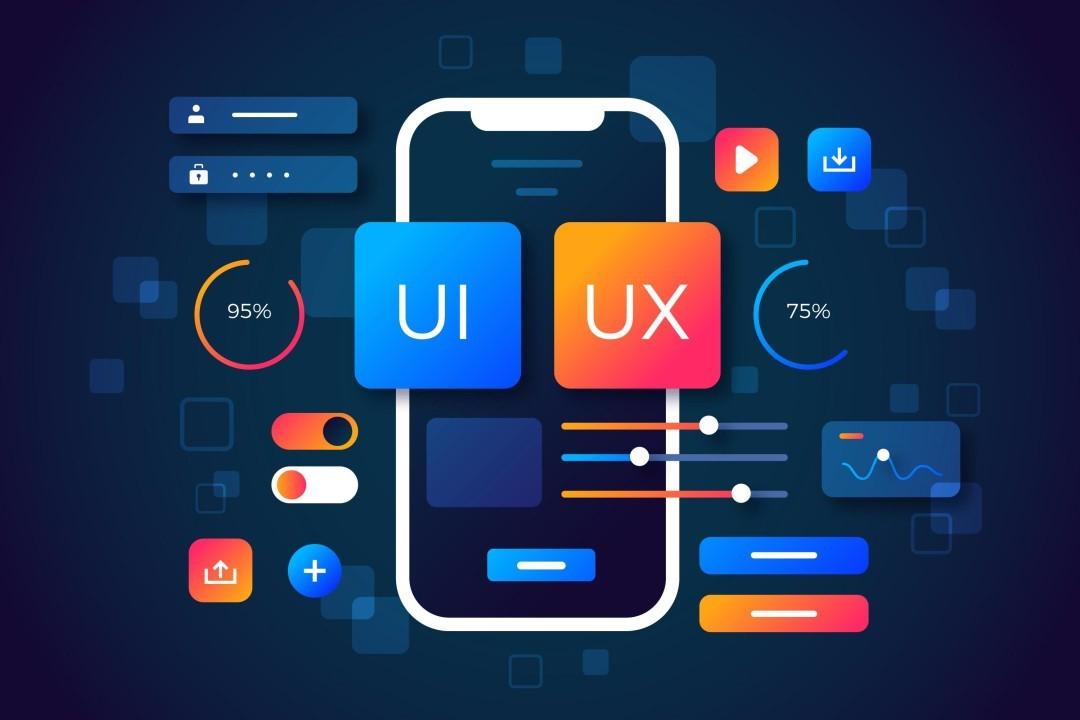The Future of UI/UX Design: Shaping Tomorrow’s Digital Experiences
The domains of User Interface (UI) and User Experience (UX) design are undergoing revolutionary changes because of the rapid advancement of technology. The advancements in virtual and augmented reality (VR/AR), artificial intelligence (AI), and users' increasing expectations for intuitive, smooth, and engaging digital experiences are driving these shifts. The main developments and trends that will influence UI/UX design in the future are examined in this article.

First, machine learning and artificial intelligence
Because AI and machine learning provide more customized and adaptable user experiences, they are transforming UI/UX design. AI is being used by designers to study user behavior and preferences, enabling the development of interfaces that can adapt dynamically to each user's demands. With predictive analytics, one may foresee potential user actions. I want to do next, offering suggestions and automating routine tasks.
For example, AI-driven chatbots and virtual assistants are becoming more sophisticated, providing instant support, and enhancing user engagement. These tools use natural language processing to understand and respond to user queries in a conversational manner, creating a more interactive and human-like experience.
User Interfaces for Voice (VUIs)
Voice technology is quickly taking center stage in the digital world. As smart speakers and virtual assistants such as Apple Siri, Google Assistant, and Amazon Alexa proliferate, voice user interfaces, or VUIs, are becoming a major trend in UI/UX design. Hands-free interaction is a feature of VUIs that is especially helpful for multitasking and accessibility.
Enhancing the intuitiveness and context awareness of VUIs is key to their future. Enhancing voice recognition precision and smoothly merging VUIs with other digital interfaces are top priorities for designers. This will make it easier for users to switch between touch and speech interactions, resulting in a more seamless and seamless user experience.
Virtual reality (VR) and augmented reality (AR)
VR and AR technology have the potential to completely change how users interact with digital content. AR overlays digital information onto the real world, while VR creates fully immersive virtual environments. These technologies offer exciting possibilities for UI/UX design by enabling more interactive and engaging experiences.
In retail, for instance, AR can allow customers to visualize products in their own space before making a purchase. In education, VR can create immersive learning environments where students can explore historical sites or conduct virtual science experiments. As AR and VR hardware becomes more accessible and affordable, their integration into everyday digital experiences will become more widespread.
3D and Immersion Design
Immersive and three-dimensional design aspects are becoming increasingly important in UI/UX design, replacing flat, two-dimensional interfaces. The need to provide users with more realistic and engaging experiences is what is driving this change. Interfaces can be made to be easier to use and more pleasant by using 3D graphics, animations, and spatial design aspects.
For instance, in e-commerce, 3D models and animations can offer more in-depth product views, improving the customer experience. Immersion design has the potential to produce more engrossing and realistic settings in entertainment and gaming. It is anticipated that designers will use these features more frequently in their work as 3D content creation technologies become more sophisticated and widely available.
Inclusive and Ethical Design
The significance of moral and inclusive behavior is growing as digital experiences become more pervasive in daily life. design is gaining recognition. Designers are being called to consider the broader social implications of their work and ensure that digital interfaces are accessible to all users, regardless of their abilities or backgrounds.
Future UI/UX design will prioritize inclusivity by adopting universal design principles and complying with accessibility standards. This involves creating interfaces that are usable by people with disabilities, such as those who rely on screen readers or voice commands. Additionally, ethical design practices will address issues such as user privacy, data security, and the potential for algorithmic bias.
Animation and Micro-Interactions
Tiny, delicate animations or feedback systems that react to human input are known as micro-interactions. These design components improve the user experience by guiding users through activities, giving instant feedback, and bringing joy to interactions. Micro-interactions will be used more often and with greater sophistication as UI/UX design advances.
To provide more responsive and fluid user interfaces, designers will make use of sophisticated animation techniques. In addition to increasing usability, these micro-interactions will enhance the overall emotional and aesthetically pleasing appeal of digital products. The difficulty is striking a balance between inventiveness and usefulness so as not to overload consumers with too many animations.
Design Driven by Data
Using data analytics and user feedback to guide design decisions is known as data-driven design. create more effective and user-centered interfaces by understanding how users interact with digital products. The future of UI/UX design will see greater integration of data analytics tools that provide real-time insights into user behavior.
By analyzing metrics such as user engagement, task completion rates, and drop-off points, designers can identify areas for improvement and optimize the user experience. This iterative process of testing, feedback, and refinement will ensure that digital interfaces meet user needs and expectations with this method, designers can.
Conclusion:
Driven by changing user expectations and technological breakthroughs, UI/UX design has a bright future ahead of it. Digital experiences of the future will be shaped by AI and machine learning, VUIs, AR/VR, immersive design, inclusive and ethical practices, micro-interactions, and data-driven methods. The next wave of logical, captivating, and user-friendly interfaces will be shaped by designers who adopt these concepts and keep innovating.
- Art
- Causes
- Crafts
- Dance
- Drinks
- Film
- Fitness
- Food
- Games
- Gardening
- Health
- Home
- Literature
- Music
- Networking
- Other
- Party
- Religion
- Shopping
- Sports
- Theater
- Wellness
- IT, Cloud, Software and Technology


